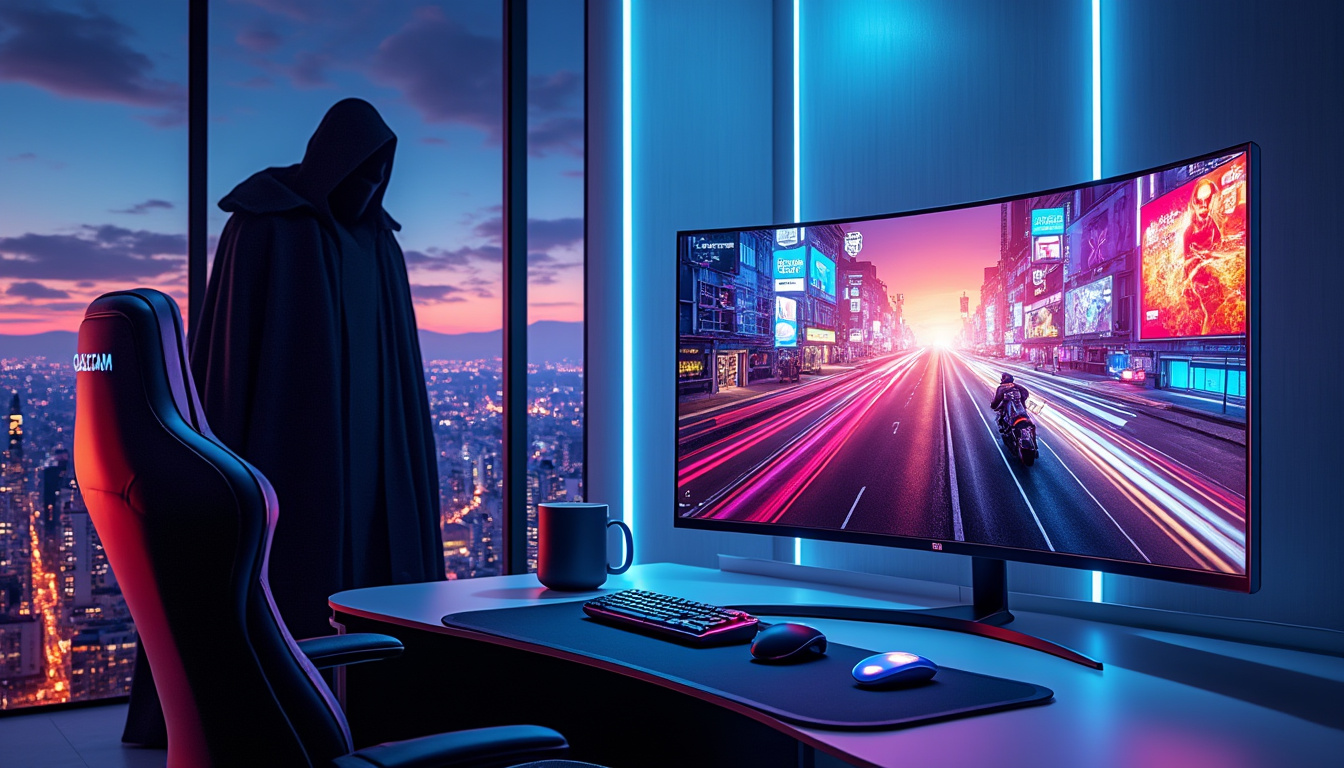|
IN BRIEF
|
In the ever-evolving world of gaming graphics, companies are constantly vying for supremacy with their innovative upscaling solutions. Recently, Qualcomm stepped into the spotlight with the launch of its enhanced Snapdragon Game Super Resolution 2, a significant upgrade that shifts from basic spatial techniques to temporal technology. This new development aims to elevate visual performance, but it inevitably finds itself in a fierce duel against Nvidia’s renowned DLSS capabilities. While Qualcomm’s ambitious move promises impressive results, the true test will be whether it can stand tall against the powerful and carefully crafted features that Nvidia has perfected over the years.
Qualcomm Enhances Gaming Upscaler with Temporal Technology
In the ever-evolving landscape of gaming graphics, Qualcomm has recently unveiled its latest innovation, the Snapdragon Game Super Resolution 2. This new upscaling solution marks a significant upgrade from its predecessor, as it transitions from basic spatial upscaling to a more sophisticated temporal technology. This shift positions Qualcomm to enter the competitive arena against established players like Nvidia and AMD, though it still faces some critical hurdles.
A Leap from Spatial to Temporal Upscaling
The introduction of temporal upscaling in Snapdragon Game Super Resolution 2 is a noteworthy shift for Qualcomm. Similar to the evolution seen in AMD’s FidelityFX Super Resolution (FSR), which also transitioned from basic to more complex upscaling techniques, Qualcomm aims to enhance visual fidelity significantly. The new upscaler promises to transform 1080p games into dazzling 4K graphics, a prospect that has gamers eagerly anticipating improved experiences.
The Absence of AI: A Potential Drawback
One intriguing aspect of Snapdragon Game Super Resolution 2 is its noticeable absence of AI capabilities. While competitors like Nvidia leverage advanced AI-driven technologies to enhance their Deep Learning Super Sampling (DLSS), Qualcomm has yet to incorporate similar features into their upscaling solutions. Currently, Snapdragon Game Super Resolution 2 does not utilize AI, leaving enthusiasts to wonder if this will hinder performance when compared to Nvidia’s sophisticated technologies. The lack of AI might become a critical factor as Qualcomm fights to carve out its niche in the competitive graphics market.
Performance Boost and Battery Life Extension
Despite the challenges posed by not utilizing AI, Qualcomm is confident about SGSR 2’s capacity to double performance while maintaining stunning visuals. The company’s claims suggest that the upscaling technology can effectively balance graphical fidelity and power efficiency, making it an appealing choice for gamers looking to extend their playtime without compromising on quality. These advantages resonate closely with the benefits offered by Nvidia’s DLSS and AMD’s FSR, though the question remains whether SGSR 2 can reach their level of optimization.
Hardware Support and Competition Landscape
While Qualcomm has not explicitly detailed the hardware support for SGSR 2, it is presumed that a range of Snapdragon chips across smartphones and Qualcomm’s new Snapdragon X chips for PCs will support this innovative technology. However, without a strong lineup of gaming titles optimized for this upscaling solution, Qualcomm could face challenges in establishing a robust presence in the PC gaming scene. Furthermore, if AMD’s next-gen FSR 4 moves towards AI-based enhancements, it could leave Qualcomm’s upscaler at a disadvantage.
Software Support for Enhanced Gaming
Qualcomm has announced that the Snapdragon Game Super Resolution 2 will feature a plugin for Unreal Engine, ensuring compatibility with the latest major game engines. Additionally, it supports both Vulkan and OpenGLES APIs, laying the groundwork for developers looking to integrate this technology into their games. However, the lack of specific titles mentioned raises concerns about how well this upscaler will perform in real-world gaming scenarios and whether it can genuinely compete with established technologies like DLSS or FSR.
Conclusion left to the readers
In a world where high-quality gaming visuals have become a staple, Qualcomm’s new upscaling technology has set off ripples of excitement and curiosity. The transition to temporal upscaling marks an important step forward, yet several clouds loom on the horizon that Qualcomm must navigate if it wishes to rise to the challenge posed by Nvidia and AMD. As the gaming community awaits further developments, it will be fascinating to see how Qualcomm’s innovation stands up against the giants of the gaming graphics world.
Comparison of Qualcomm and Nvidia Gaming Upscaling Technologies
| Feature | Qualcomm Snapdragon Game Super Resolution 2 | Nvidia DLSS |
| Upscaling Type | Temporal Upscaling | AI-Driven Upscaling |
| Performance Claim | More than double performance | Significantly boosts frame rates |
| Resolution Enhancement | Transforms 1080p to 4K | Various enhancements including 4K |
| Battery Efficiency | Maintains performance while extending battery life | No specific battery optimization features mentioned |
| AI Capabilities | None stated | Utilizes AI for improved visuals |
| Game Support | Specific games not mentioned | Broad compatibility with many titles |
| Market Position | Emerging contender | Established leader |
FAQ on Snapdragon Game Super Resolution 2
Q: What is the Snapdragon Game Super Resolution 2?
A: It is Qualcomm’s latest gaming upscaling solution designed to rival Nvidia’s DLSS and AMD’s FSR, aiming to enhance visual quality and performance.
Q: How does Snapdragon Game Super Resolution 2 differ from its predecessor?
A: The new version transitions from spatial to temporal upscaling technology, allowing for better performance and image quality.
Q: Does Snapdragon Game Super Resolution 2 use artificial intelligence?
A: No, Qualcomm has not integrated AI capabilities into this upscaling platform, unlike Nvidia’s DLSS and certain features of AMD’s FSR.
Q: What performance benefits does Snapdragon Game Super Resolution 2 offer?
A: Qualcomm claims it can transform 1080p games into stunning 4K visuals and potentially double performance while also extending battery life.
Q: How does Snapdragon Game Super Resolution 2 compare to Nvidia’s DLSS?
A: The competition is tough, as Qualcomm’s solution lacks AI sophistication, making it challenging to achieve the same level of image quality and performance as Nvidia’s well-established technology.
Q: What kind of hardware supports Snapdragon Game Super Resolution 2?
A: It is expected to be compatible with various Snapdragon chips, which includes smartphones and Qualcomm’s new Snapdragon X chips for PCs.
Q: Is there game support available for this new technology?
A: Qualcomm has not specified which games will support Snapdragon Game Super Resolution 2, but they have provided a plugin for major game engines like Unreal Engine and support for Vulkan and OpenGLES APIs.



